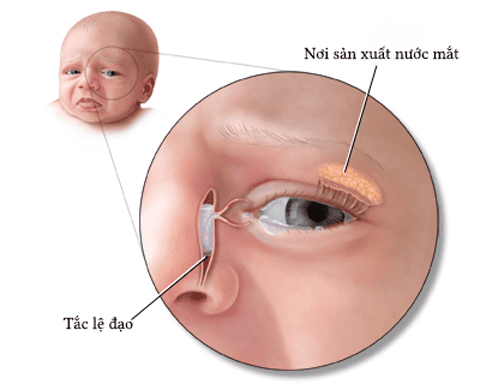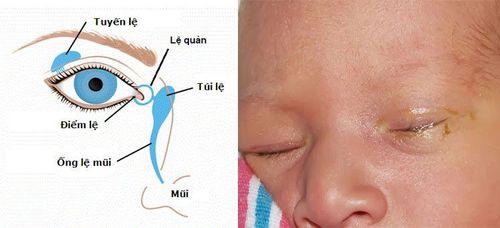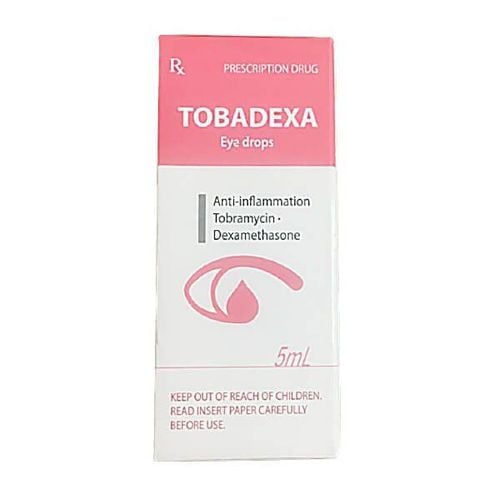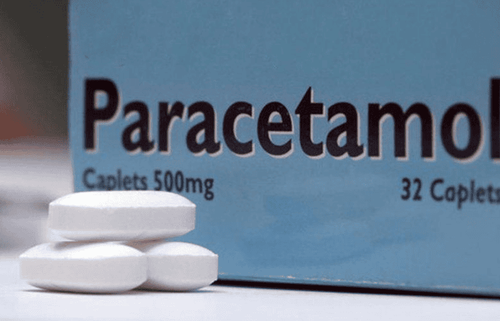This is an automatically translated article.
The article is professionally consulted by Master, Doctor Hoang Thanh Nga - Department of Medical Examination and Internal Medicine - Vinmec Ha Long International Hospital. The doctor has 10 years of experience in the field of ophthalmology.The phenomenon of continuous tearing, which is called live tears, often causes discomfort and affects life and activities. This phenomenon can occur at any age but is most common in infants. The most common cause is tear duct obstruction.
1. Overview of lacrimal occlusion
1.1. The role of tears Tears play an important role in vision, helping to maintain eye health by moisturizing and providing oxygen to the eyeball, tears also contain natural antibiotics that automatically wash away irritants. reactive or harmful. Tears flow from the lacrimal gland, located above the eye and quite far from the nose, and drain into 2 very small tear points in the inner corners of the upper and lower eyelids. This amount of tears will continue to flow through the 2 tear ducts located in the eyelids to the lacrimal sac on the side of the nose, and then to the nose through the lacrimal duct. Here tears are evaporated or reabsorbed.
1.2. What is the code of ethics? Because the anatomy of the lacrimal gland is a ductal system, the most common pathology in the lacrimal gland is lacrimal occlusion. When the tear duct is blocked, children can cry but tears can no longer drain down the nose as usual, causing live tears leading to infection of the tear ducts, causing inflammation and pain. About 20% of children are born with blocked lacrimal glands, most of which clear up on their own by the time the child is 1 year old. Adult tear duct obstruction usually occurs when the patient has an infection, swelling, or tumor in the eye, causing the tear drainage system to partially or completely block.
=>>See more: Recognizing lacrimal occlusion in infants
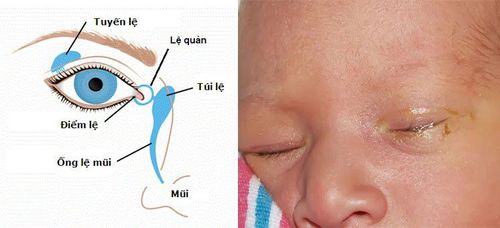
Nhận biết tắc lệ đạo ở trẻ sơ sinh
2. Why is the lacrimation blocked?
Thrombocytopenia can occur in any age group, from infants to adolescents or the elderly, but is more common in women than in men. Newborns (especially those born prematurely) are prone to tear duct obstruction, also known as congenital lacrimal obstruction.
Laceration can occur due to causes such as:
Congenital tear duct obstruction: No lacrimal point, lacrimal sac fistula, neonatal lacrimal tract infection, Long-term infectious diseases: Rhinitis, chronic sinusitis , allergic rhinitis , trachoma , conjunctivitis . Tumors and scars in the eye cause pulling and compressing the tear ducts. Burns, trauma (injuries to the eyes, nose, sinus surgery) cause blockage, rupture of the tear ducts, pulling the tear point to be deviated. Age-related changes: narrowing of the lacrimal tears in the elderly. Cranial and eye development abnormalities: Down syndrome or other disorders may increase the risk of tear duct obstruction. =>> See more: How to handle live tears due to blocked tear ducts in children
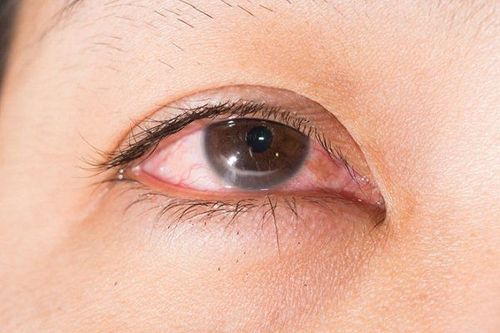
Viêm kết mạc có thể gây ra tắc lệ đạo
3. How to recognize when the religion is blocked
Blockage of the lacrimal duct can cause bacterial stasis in the nasolacrimal duct and lacrimal sac. Symptoms of an eye infection include:
Patient has continuous watery eyes for several days Eyes showing signs of infection repeatedly or continuously Scaling on the eyelashes The inner corner of the eye or the area between the eyes and the nose is red, swelling Mucous discharge (purulent discharge) at the corners of the eyes Blurred vision, affecting vision. Tears with blood stains. Fever The drainage system can become blocked in any position and is easily aggravated by a cold, sinusitis, sun exposure or exposure to cold air. If left untreated, chronic lacrimal occlusion can progress to acute inflammation that causes an abscess in the lacrimal sac, or even a fistula, to drain pus. Patients with blocked tear ducts often have a lot of pain, the inner corner of the eye is swollen and red. In general, when symptoms of irritation, tearing or prolonged inflammation are present, patients should consult an ophthalmologist as soon as possible.
Currently, there are no specific measures to prevent congenital lacrimal occlusion. Particularly in the case of tear duct obstruction due to trauma or surgery, the best measure is to avoid these injuries. For patients with chronic inflammatory eye diseases such as trachoma, conjunctivitis, early and thorough treatment also contributes to limiting tear duct obstruction.
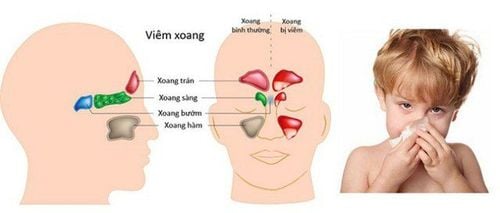
Hệ thống thoát lưu có thể bị tắc ở bất kỳ vị trí nào và dễ trở nặng khi bị viêm xoang
Vinmec Hospital has all the necessary equipment as well as a team of experienced specialists to treat this disease.
Please dial HOTLINE for more information or register for an appointment HERE. Download MyVinmec app to make appointments faster and to manage your bookings easily.




